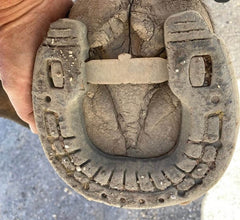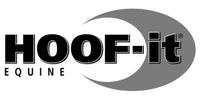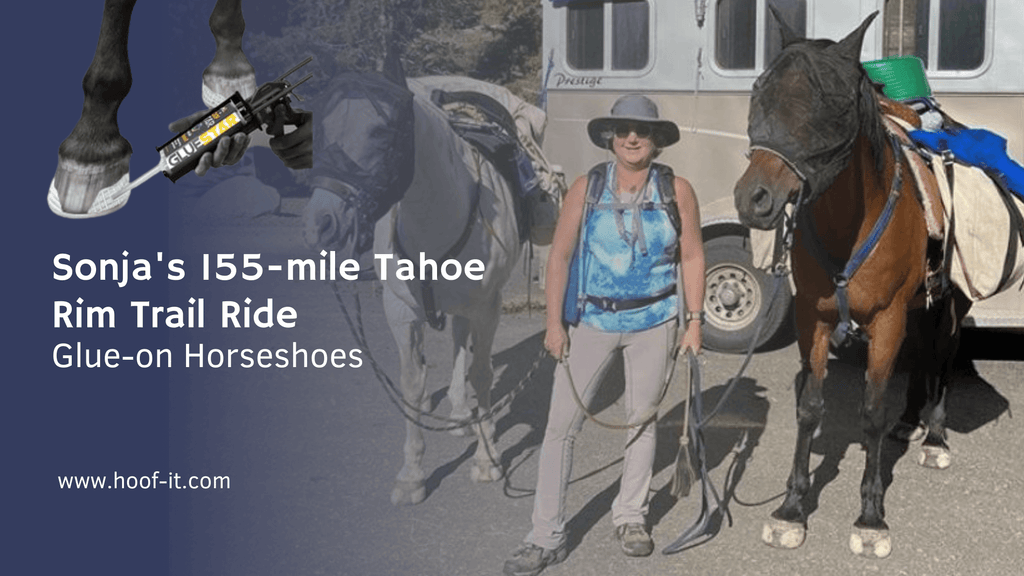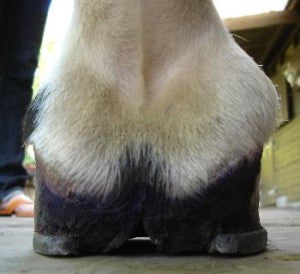Sonja's 155-mile Tahoe Rim Trail Ride with Glue-on Horseshoes
HOOF-it and the Hoofstar glue on shoe teamed up with Sonja this summer on a 155-mile Tahoe Rim Trail ride and a 50-mile endurance ride and here is how the Hoofstar performed.
 .
. 
 .
. 
We spent some time with Sonja a week before her ride to deliver all the shoes and glue she would need for her trip, meet her two horses and help her fit the right shoes. The Tahoe Rim Trail ride would prove to be challenging to both her, her horses and our Hoofstar shoes.
Sonja was able to get a pretty good fit and great bond a few days prior to leaving for the Rim Trail ride. Her husband and other friends would check on her periodically to re-stock her with supplies any products she may need to keep her Hoofstars working for her along the way.

She experienced all kinds of terrain on the Tahoe Rim from dusty dirt trails to trails over run with shale and rocks and the occasional stream to cross. She confirmed that the shoe had worn pretty well and, in terrain that wasn’t super rocky, the shoes would last 40 plus miles easily, mostly getting worn on the toe.

She did however, lose a few pairs out there because the rocky terrain was very unforgiving and it really put these shoes to the test. The stress bending and twisting on the rocky trails would cause the side wall to separate from the shoe and the glue would separate from the hoof. Overall, she said she loved the shoes and would love to take them on her 50-mile endurance ride that she would be doing in August with Chip.
The Mary & Ann Memorial Endurance Ride outside of Bend Oregon took them about 9 hours to complete and led them through mostly dry desert and some rocky areas. Their ride consisted of three loops. The first was 24 miles, the second 15 miles and the third and final loop was 11 miles. Sonja glued on her Hoofstars three days before her ride and she’s happy to report that the shoes stayed on for the entire ride and performed perfectly for her! She gave the Hoofstar glue on shoes a thumbs up!
 .
. 


